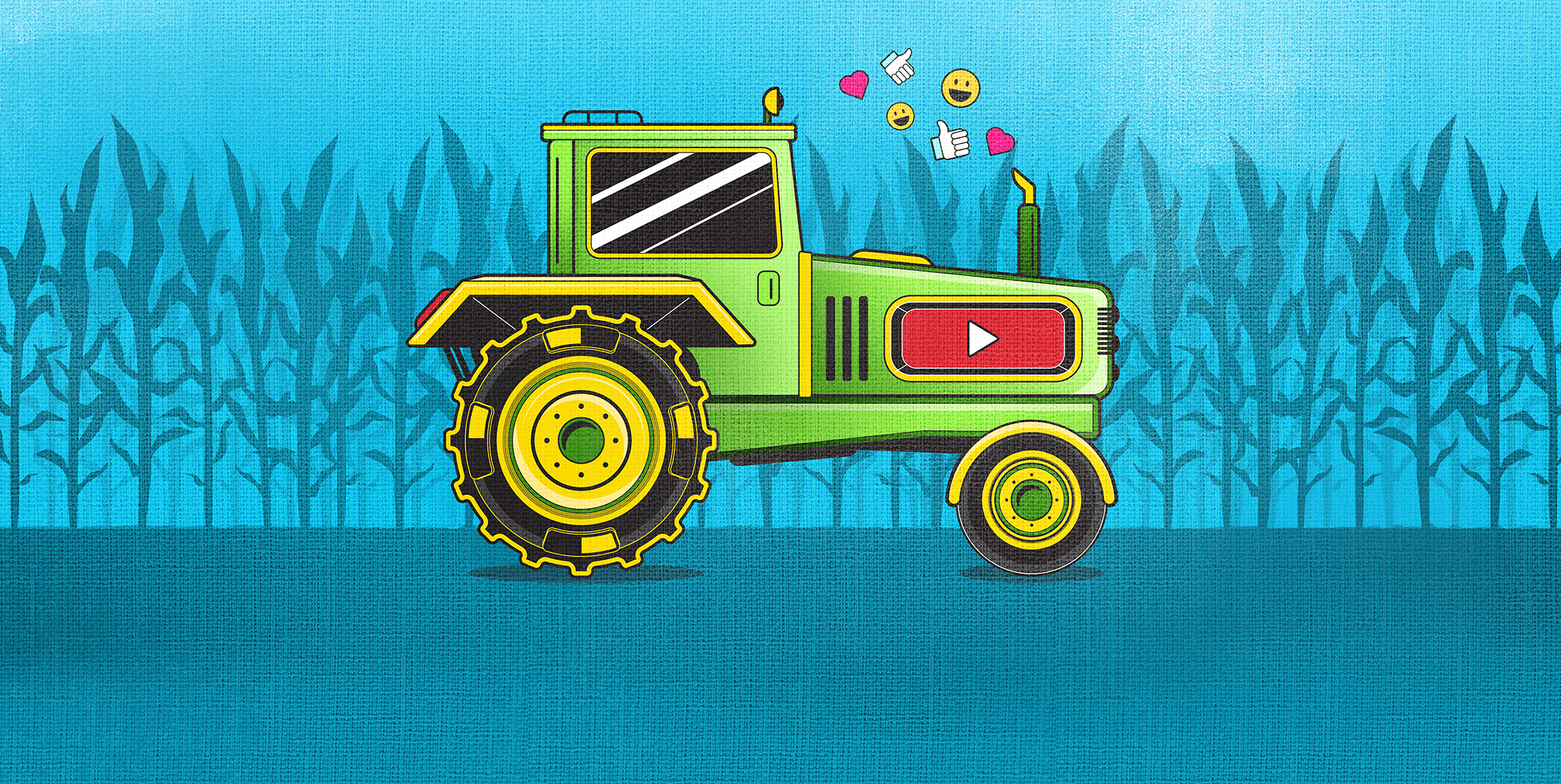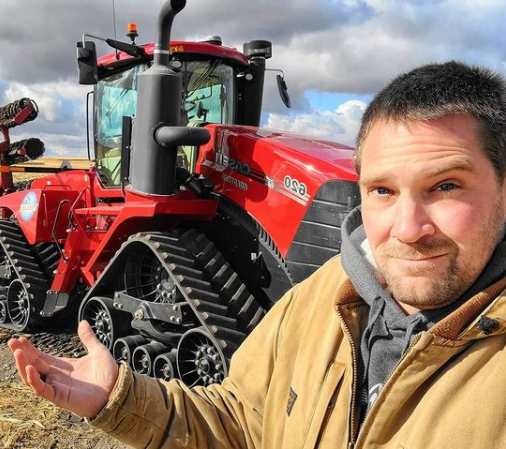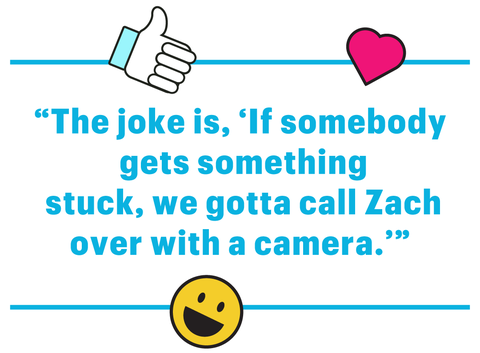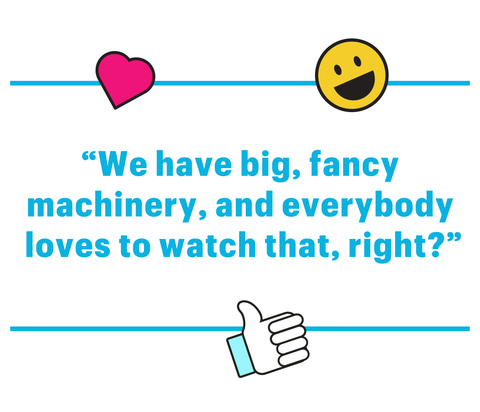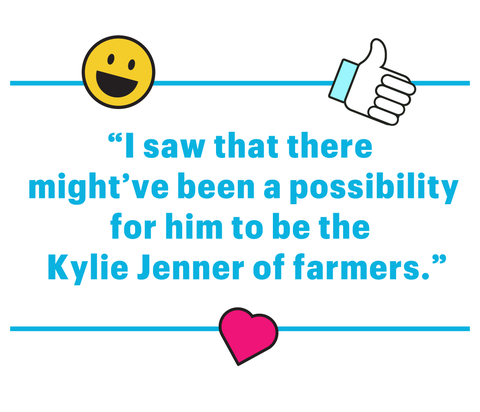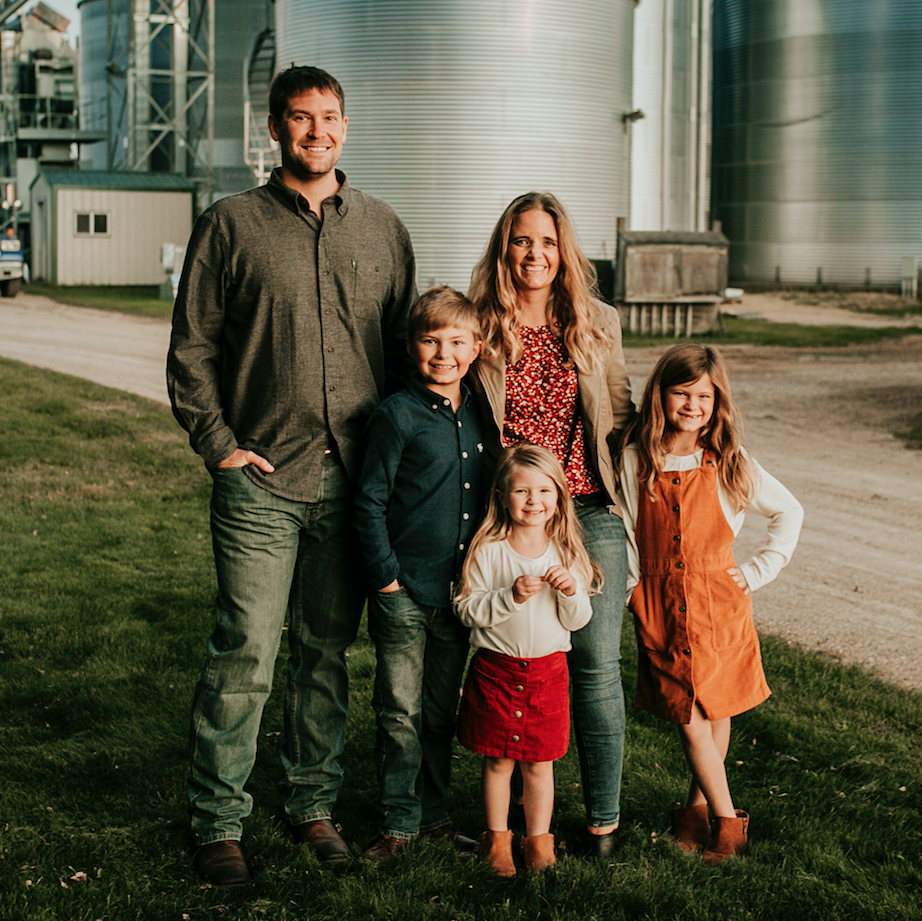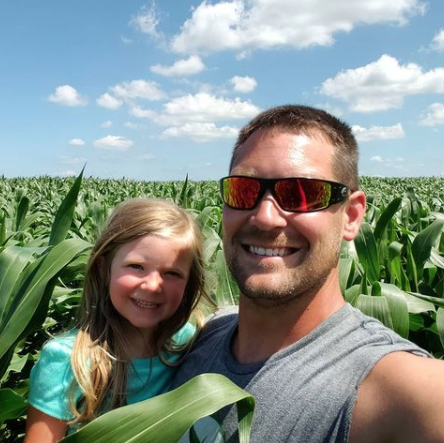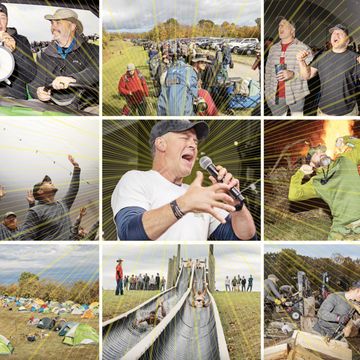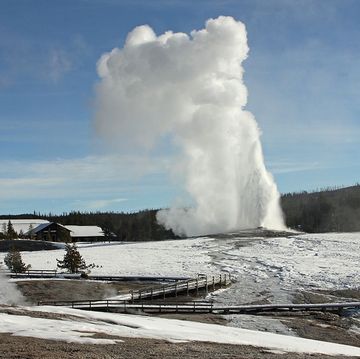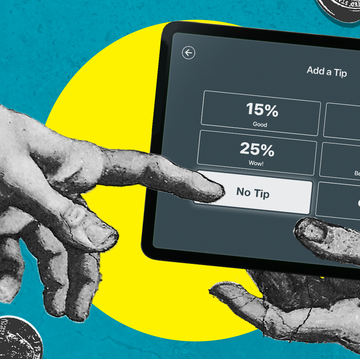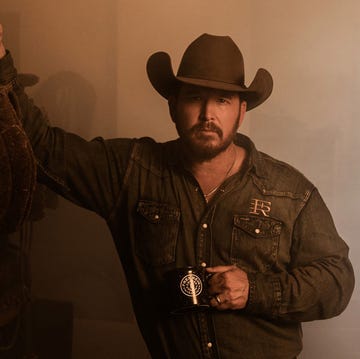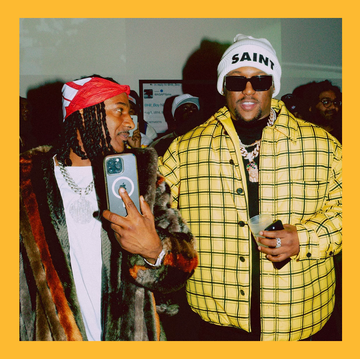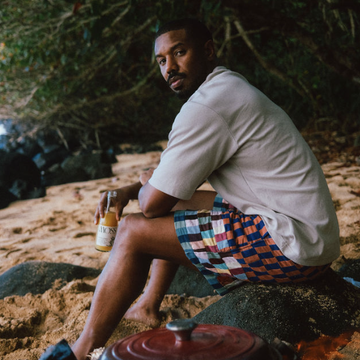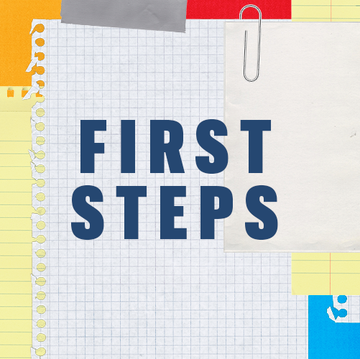THE END OF planting season was in sight—just 350 acres left to fill with soybeans—when Zach Johnson, 36, got a call about a problem out in the field. A 40,000-pound tractor with a cultivator hitched to the back was stuck in the mud, its nose buried so deep that it couldn’t back out on its own. Most family farmers would see this as an expensive, time-consuming debacle, but Johnson also smelled an opportunity. He grabbed some rope, chains, and his video camera.
After an hour of trial and error, Johnson and three other guys finally managed to free the John Deere from the knee-deep muck. (Pro tip: Use a non-stuck tractor to pull out your stuck tractor.) On the bright side, “Tractor Stuck in the MUD” went on to amass more than 3.2 million YouTube views after Johnson posted it on June 4, 2019, making it the all-time most popular video on his channel, Millennial Farmer.
It’s not that he hopes this kind of calamity occurs. The full-time fifth-generation farmer has enough on his plate growing corn and soybeans on his family’s land in west central Minnesota. But at least when a gargantuan piece of equipment sinks into a surprise sludge pit, there’s a silver lining: the chance to make another blockbuster video.
“People loved it,” Johnson says of the tractor fiasco. “Now the joke is, ‘Okay, if somebody gets something stuck, we gotta make sure we call Zach over with a camera.’”
The funny thing is that most of the video titles on Millennial Farmer don’t scream “viral.” They don’t even whisper it. Among Johnson’s other most popular videos are “Moving Snow as Slowly as Possible” (a sarcastic jab at his leaky tractor), “A Long Day of Planting Corn” (it was going to rain the next day), and “First Day of Corn Harvest 2018” (a word I just learned: threshing, which means to separate grain from a plant). The videos tend to run between ten and 30 minutes, filmed by Johnson as he goes about his everyday farm tasks. A tractor stuck in the all-caps MUD is about as dramatic as things ever get.
Yet they’ve raked in more than a million views apiece, and not just from people in the agriculture business. Around two years ago, I noticed my husband, a big-city dweller, had started watching Millennial Farmer to unwind at the end of the day. He has a high-pressure job and a not high propensity for sharing what’s on his mind, so it was (and still is) comforting to see him sink into his favorite corner of the couch and get lost in a drama-free world of soil tilling.
“I don’t turn it on looking for thrills,” my husband explains. “It’s relaxing.”
Although I personally favor chiropractic back-cracking videos, bird-nest cams, and ASMR of rabbits eating lettuce as my relaxing YouTube fare, at one point I decided to join him. I’ve stayed tuned in ever since. The American Farmer is an ideal that many of us probably still think about in anachronistic terms; Johnson’s YouTube channel keeps the pastoral vibe but also shows a modern reality that’s educational and highly endearing.
Whenever we watch Millennial Farmer before bed, Johnson’s even-keeled narration about how to get more out of his bucolic landscape helps power down my brain for the night. It’s like watching Bob Ross paint happy little trees or the Pioneer Woman stir chili in a pot (think soothing sights, tranquil explanations, and a pretty clear direction of where things are going). Throughout the hellscape of the past year, this little corner of the Internet offered both of us—and apparently millions of other people—an oasis. Millennial Farmer entered 2020 with around 400,000 subscribers and as of January 2021 has more than 700,000. It feels like the sort of positive, escapist experience a lot of us could use right now.
To keep the magic coming, Johnson has to be farmer and content creator simultaneously, and the two jobs require different kinds of all-in commitment. The former rewards patience, careful planning, and long, exhausting workdays; the latter seems to hinge on a star’s ability to create must-watch moments—not what life on a Minnesota farm always has in store. But he’s doing his damnedest to create them, because right now YouTube brings in a lot more cash than farming, and it’s helping his business get ahead.
The challenge is figuring out how to keep growing corn, soybeans, and followers at the same time.
LONG BEFORE THERE was a Millennial Farmer, there was a farm. It started in the 1870s, after Johnson’s Swedish ancestors immigrated to America and received 160 acres of land through the U.S. Homestead Act. Today, Johnson and his dad, Nathan, farm a little more than 2,600 acres, some of which they own and some of which they rent. (Because of tax laws that are way too boring to get into, Johnson and his dad hold separate plots but farm them all together, each paying rent on the other’s machinery and sharing the same four workers. “It’s not a simple cut-and-dry thing, that’s for sure,” Johnson says.)
During high school in the early aughts, Johnson considered becoming a police officer or a conservation officer. He also had a passion for race cars and, when he graduated, went to college around 200 miles north in Bemidji, Minnesota, to learn how to build them. But in his second year, he broke his ankle in a snowmobile accident and moved home, unable to walk around for three months.
“When I finally healed up, I decided, Okay, I’m here now. Why don’t I just farm with Dad for a year or two, and we’ll see how this goes?” he remembers. “It just kind of continued from there. I never made the choice that I wanted to go anywhere else after that.”
Johnson threw himself into life on the farm, just like the four generations that came before him. He loved the work, but over time, something started to wear at him: the amount of misinformation about the agriculture business that his friends and even some of his family members were sharing on social media.
Some of the Johnsons’ corn goes to local ethanol plants, but a lot ends up in China as livestock feed, along with much of their soybean crop. It’s a fairly sustainable business model: “The world continues to demand more and more grain all the time,” Johnson says. But keeping up with that demand means it’s best for the Johnsons’ farm—along with many family farms like theirs—to use synthetic fertilizers, pesticides, and other newer agricultural technology.
That’s why, in 2016, Johnson launched a YouTube channel and named it Millennial Farmer. (“I wanted to show people that millennials can and do work hard,” he says.) He’d eventually get himself a GoPro, not to mention loosen up a little in front of the camera, but in the early days, Johnson filmed himself on his cell phone with a single goal in mind.
“I’m concerned about the disconnect between farmers and consumers,” he says in his very first video, uploaded April 3, 2016. He’s wearing a blue hoodie and standing in front of a John Deere tractor, hands stuffed in the pockets of his jeans. “There’s a lot of stuff out there on the Internet. Most of it isn’t true. A lot of it’s full of half-truths. And it’s really hard for consumers to understand what goes on on the farms and what we do out here and why.”
In other early clips, Johnson defends hot-button topics like GMOs—which humans have actually been using for centuries—and glyphosate, the controversial weed killer known as Roundup. “We believe GMO crops are safe,” he says in a June 6, 2016, video called “Spraying corn with Round up.” “We have grown all GMO crops for many years.” As he shows off the trailer that he uses to transport water and chemicals for spraying corn, Johnson moves on to glyphosate: “If you listen to Dr. Oz, it’s basically killing us all,” he says. “But if you listen to scientists, glyphosate is one of our safest chemicals available to us. The fact that we’ve been able to use it for the last 20 years has allowed us to not have to use so many harsh chemicals that we were using in the ’60s, ’70s, and ’80s.” (According to the U.S. Environmental Protection Agency, glyphosate “has a low toxicity for people,” and there are “no risks to public health when glyphosate is used in accordance with its current label.”)
The farming industry is “constantly evolving,” Johnson says now. “We’re using the latest and greatest technology to be efficient and to understand the soil and the water and the plants. I really wanted a way to try to communicate that to people.”
For more than a year, the channel was just a hobby. Then, by some algorithmic magic, it blew up. In September 2017, Johnson had gone six weeks without posting, so he figured he’d show people how the farm was preparing for harvest season, the busiest time of year. The result was “Gearing up for Harvest!”—an 18-minute tour of the grain bins where they keep the harvested crops and the cold storage shed where they keep the heavy machinery.
The video exploded.
“That was the first video I had that went over a hundred thousand views, and it probably did that in three or four days,” Johnson remembers. “I mean, I just couldn’t believe it.”
The appeal of his channel isn’t exactly surprising to Jessica Gall Myrick, Ph.D., an associate professor of media studies at Pennsylvania State University. Curiosity is one of the strongest motivators for people to consume information, she says, and it makes perfect sense that people outside the agriculture community—but who are curious about food and the earth—would be drawn to Johnson’s farming videos. (Around half of Millennial Farmer’s YouTube viewers are non-farmers, says Johnson’s wife, Becky, 34, who ran a poll.)
“A YouTube channel dedicated to that topic may appeal because it touches broadly on something they care about but also has new information that could challenge them in an approachable way,” Myrick says.
Then there’s the relaxation factor—or “mood management,” in media-researcher parlance. The concept suggests that when we’re feeling agitated, we tend to seek out calming media—you know, like an 18-minute, drama-free video about grain bins.
“Another part of mood management argues that when we feel bad—sad or upset—we are more likely to seek out positive media—and the Millennial Farmer fits that bill,” Myrick adds.
Johnson has some theories of his own about why his channel blew up the way it did. Sure, there are viewers who want to learn more about agriculture, but there are also the fans who are “kids at heart.” “We have big, fancy machinery,” he says, “and everybody loves to watch that, right?”
Johnson had heard of people making money off YouTube. Emboldened by the success of “Gearing up for Harvest!” he signed up for Google AdSense. A few days later, he saw $92 in his account from just the one video. Blown away, he showed Becky, who’s a bit more social-media savvy. She asked him if he’d heard of the term influencer. He bristled. “I said, ‘No, but that sounds like one of the dumbest, most millennial terms I’ve ever heard,’” Johnson remembers.
“I saw that there might’ve been a possibility for him to be the Kylie Jenner of farmers,” Becky says. “He didn’t really understand what the heck that meant at first, but then I kind of just kept pushing.” After mulling it over, Johnson agreed to try it for a year and see where it led.
The following year, they happened to move onto the main farm so Johnson could be closer to work. It was a long-held plan that wasn’t motivated by Operation Kylie Jenner of Farmers, but it certainly helped with that. Becky—who'd been running a daycare out of their former home—wasn’t feeling up to opening a new one, and instead of finding a new job, she took over Millennial Farmer’s editing duties so they could publish more content. By the end of 2018’s harvest season, thanks to videos like “First Day of Corn Harvest 2018” and “Harvesting Wet Corn,” their subscribers ballooned from around 70,000 to 150,000.
“I mean, it really blew up on us,” Johnson says. “I guess that, in a nutshell, was kind of the beginning of it all.”
It was a fruitful harvest, but there was just one problem: Winter was coming. Soon, Johnson’s days would be spent meeting with accountants and ordering chemicals and seeds for the following year.
“None of that makes good, entertaining content,” Becky says. “You can’t make a video out of that.”
ONE OF THE trickiest parts of running Millennial Farmer has been figuring out how to grow in the off-season. They’ve made videos about plowing snow. They’ve filmed visits to other farms. In 2019, they launched a podcast called “Off the Husk,” where Johnson, Becky, and various guests talk candidly about farming; it averages 50,000 to 70,000 downloads per episode, according to Becky, who edits that, too. (“We’re dabbling right now with needing a third person,” she says.)
Family content has also become a year-round staple. It turns out that people are clamoring for a look at the Millennial Farmer’s personal life. “10 Year Old Grain Cart Driver,” an October video featuring the couple’s son, Onyx, is already the channel’s sixth-most-popular video of all time, with 1.4 million views and counting. In December, the Johnsons introduced a new YouTube channel, Between the Rows, that’s dedicated exclusively to family time. The most recent video shows them picking out a Christmas tree.
“Please remember to video removing the tree next month,” one commenter wrote. “I want to see the carpet of pine needles it leaves behind.”
A parasocial relationship is when viewers develop emotional connections to people they know only through media, and these tend to deepen with more screen time. That seems to be at play here, and it comes at a price—the Johnsons’ privacy, for starters. “We have people that will just randomly stop in the yard on a Sunday afternoon when my wife’s in the shower and I’m not home and ask if my kids can come out and play with their kids,” Johnson says. “It is tremendously terrifying.”
The kids are allowed to decide when they feel like appearing in a video. “Our one daughter clams up, and you can just tell she’s not comfortable with it, so we don’t put her on camera,” Becky says. “We know our kids and know when they’re into it.”
I asked him a couple times, but Johnson wouldn’t tell me exactly how much he earns through YouTube. In a 2019 interview with CNBC Make It, he said he earned five times as much money from social media as he did from his crops. “Now I would say it’s quite a bit more than that,” Johnson grants me—and it’s making him “a lot more money than farming.”
Which begs the question: As the Johnsons continue to pump out videos every week and podcasts every few weeks, plus nurture a new family-focused channel, what happens if it all goes away? Viewers may have discovered them now, and their videos may be popular enough to rule various YouTube algorithms, but audiences and platforms can be fickle.
The questions may daunt someone whose sole dream is to influence, but that’s not Johnson. (He still shudders at the term influencer. He prefers creator.) Come what may for his YouTube account, Johnson says his endgame is to live out his life as a successful farmer—something he was already doing before Millennial Farmer was born. If nothing else, the blossoming of his side hobby into a side hustle has brought him closer to that goal.
“It helped move me into more of a leadership role on the farm, because now I’m able to finance my own tractors, or buy my own land, or move into more acres for myself,” he says. “It’s really just a bonus on top of what I thought the plan was all along.”
My husband and I are fully aware of our own parasocial relationship with the Johnsons; whenever the family’s two dogs and bajillion cats are onscreen, my husband pauses and calls me into the room so I can awwwwwww in a way that I just don’t with random #catsofinstagram reels. But the channel’s draw—particularly amid the chaos of now—still seems bigger than that. For the duration of each video, we’re invited into a world where most surprises are greeted with enthusiasm. Where some challenges might seem daunting but not unsolvable with a little extra work or ingenuity. Where you can only make so many decisions, because nature is your boss and sometimes you just have to accept things as they are.
Judging by Millennial Farmer’s growing subscriber count, we’re not the only ones craving that.
